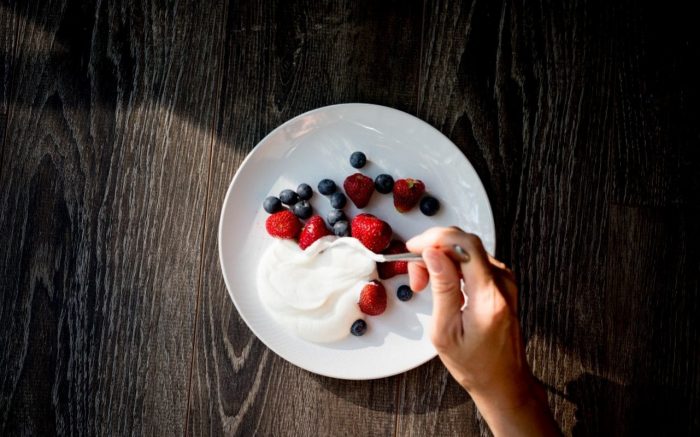
From YoGo To Yoghurt
About as close as I got to yoghurt growing up was the chocolate confection known as YoGo. I remember trying real yoghurt for the first time as an early teen and wondering how there were so many passionate lovers of the stuff given it’s acidy, sour taste. How things change. I persisted and weaned myself off sugars and flavourings to the point where I was more than happy to eat plain yoghurt with a little honey and sliced banana every morning for breakfast. In fact, I was quite addicted to the stuff.
Given I practically live off yoghurt in summer I’m not sure why it’s taken me so long to cotton on to homemade yoghurt. It has to be the most dead simple food to prepare. The best thing is it can be perfectly runny, unlike most commercial yoghurts that add stabilisers, starches, gums and gels to thicken and provide a ‘creamy’ texture. I make my homemade yoghurt is so runny I’ll be using it as a replacement for milk on cereal, which is good news for my granola breakfasts. And good news for people with lactose intolerance. During the fermentation process cultures (Lactobacillus bulgaricus and Streptococcus thermophilus) break down lactose to lactic acid meaning yoghurt is the only dairy food people with lactose intolerance can eat.
You could use semi-skim or low-fat milk, but the yoghurt will be even runnier and sour tasting. Heating the milk beforehand kills of any other organisms that may be in the milk that could compete with the culture in the yoghurt you’ll be adding. If you use unhomogenised milk (as I did) expect a film of milk fat to rise to the surface during fermentation. It’s a simple case of giving the yoghurt a gentle stir to reincorporate. The ideal temperature for fermentation is about 20°C. If runny yoghurt isn’t your thing, simply add a couple of tablespoons of dry milk powder to the milk before heating or maintain a higher temperature of 30-35°C during fermentation. Depending on the time of the year it could be better to make it during the day.
You can use this yoghurt to start your next batch, however you may have to refresh with another bought yoghurt as time goes by.
L: The fermented yoghurt with milk fat on surface. Simply stir gently to reincorporate.
Yoghurt
1L full cream milk, preferably organic
80g natural yoghurt
Heat the milk in a saucepan over high heat, stirring to prevent the milk catching on the bottom, until it starts to froth at the edges but hasn’t quite boiled. Turn off the heat and let the milk cool to a temperature of about 45°C (or until you can place the palm of your hand against the side of the pot). Pour the milk into a warmed ceramic dish.
Stir in the yoghurt, cover the dish well with plastic wrap and then wrap the entire dish in several layers of tea towel to insulate it. Leave it sit on the bench allowing the culture to make its mark. After about 8 hours your yoghurt should be set. Transfer to the refrigerator where it can be kept for up to 2 weeks.
